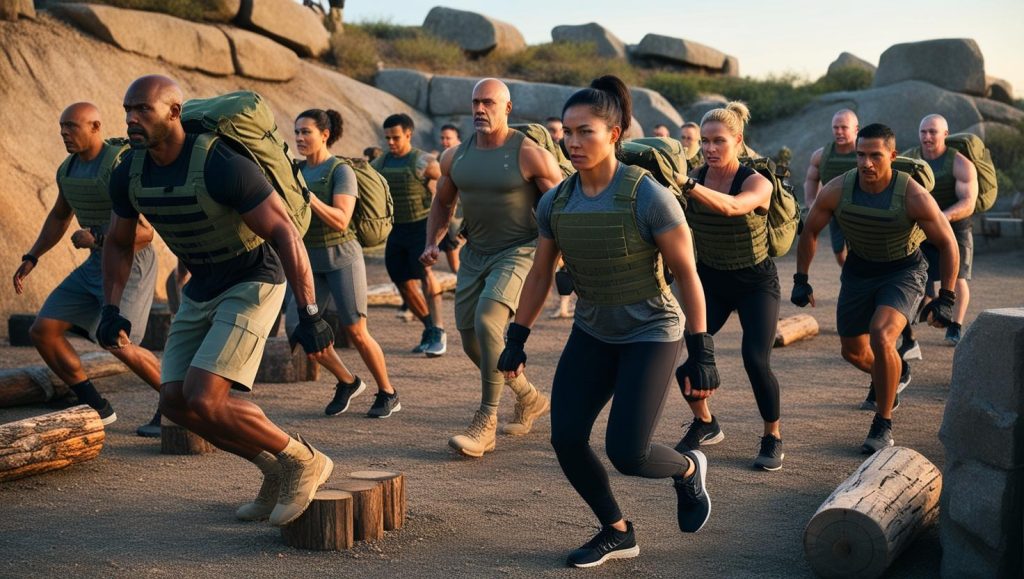Military-Style Training in Civilian Fitness

Embracing the Challenge: The Rise of Tactical and Military-Style Training in Civilian Fitness
In recent years, there has been a significant shift in the landscape of personal fitness and wellness. Individuals are increasingly drawn to regimes that not only promise physical fitness but also mental toughness and resilience. Among these, tactical and military-style training programs have surged in popularity. These programs, inspired by military training methods, offer more than just physical conditioning; they provide participants with a comprehensive approach to fitness that emphasizes strength, endurance, discipline, and strategic thinking.
Tactical and military-style training is not entirely new. Historically, these methods were exclusively used by armed forces to ensure soldiers were battle-ready. However, the adaptation of these rigorous training techniques for civilian use has brought a fresh dimension to the fitness industry. This transition from barracks to gyms has been facilitated by several factors including veteran trainers, increased awareness about physical preparedness, and a growing public interest in the disciplined lifestyle of military personnel.
What is Tactical and Military-Style Training?
At its core, tactical training involves exercises that are designed to prepare individuals for real-world physical and mental challenges similar to those faced by military personnel. This includes a combination of strength training, endurance workouts, agility drills, and survival skills. Unlike traditional gym routines that may focus solely on improving aesthetics or specific athletic skills, tactical training encompasses a broader spectrum aimed at enhancing overall capability and performance.
These programs often use bodyweight exercises, obstacle courses, weight lifting, and simulated scenarios that require strategic thinking and adaptability. For instance, participants might navigate through mock assault courses or participate in team-based challenges that mimic emergency situations or combat conditions.
The Benefits of Tactical and Military-Style Training
The benefits of this type of training are manifold. Physically, it develops muscular strength and endurance, improves cardiovascular health, and enhances flexibility and agility. These are achieved through high-intensity interval training (HIIT), load-bearing marches, and repetitive drills that push the body to its limits.
Mentally, tactical training instills a sense of discipline and focus. The challenging nature of the workouts requires participants to cultivate mental toughness, stress management skills, and a never-give-up attitude — qualities that are invaluable not just in physical confrontations but in daily life.
Moreover, this style of training promotes teamwork and leadership skills. Many exercises require coordination and cooperation with others, thereby fostering a sense of community and mutual respect among participants. This aspect can be particularly appealing for those who miss the camaraderie found in team sports or are looking for a more engaging fitness experience.
Who Can Benefit from Tactical and Military-Style Training?
While it might seem that such intense programs are suited only for young or highly fit individuals, tactical training is remarkably inclusive. Programs can be scaled according to individual fitness levels and capabilities. Beginners can start with basic drills and gradually progress to more demanding tasks as their fitness improves.
This inclusivity makes tactical training an excellent option for those looking for a structured fitness regime that offers measurable growth. It is also suitable for individuals seeking to enter careers in law enforcement or other fields where physical fitness is paramount.
Challenges and Considerations
Despite its many benefits, tactical and military-style training is not without its challenges. The intensity of the workouts can be daunting for newcomers. Potential participants should consider their physical condition and consult with professionals before embarking on such programs to avoid injuries.
Furthermore, it is crucial to find qualified trainers who are experienced in scaling workouts to suit diverse groups while maintaining the integrity of the military-inspired regimen. Ensuring proper form and technique is essential to gain the full benefits of the exercises while minimizing risk.
Conclusion
Tactical and military-style training offers a unique blend of physical conditioning and mental fortitude development that traditional workout programs often lack. It appeals to those seeking not just a transformative body workout but also a stronger mindset equipped to handle life’s various battles. As more people strive for holistic wellness — encompassing physical robustness, mental sharpness, emotional resilience — the appeal of tactical training continues to grow. Whether you’re looking to break the monotony of conventional gym routines or prepare for a career demanding peak physical condition, military-style training presents an exhilarating yet challenging alternative.

















